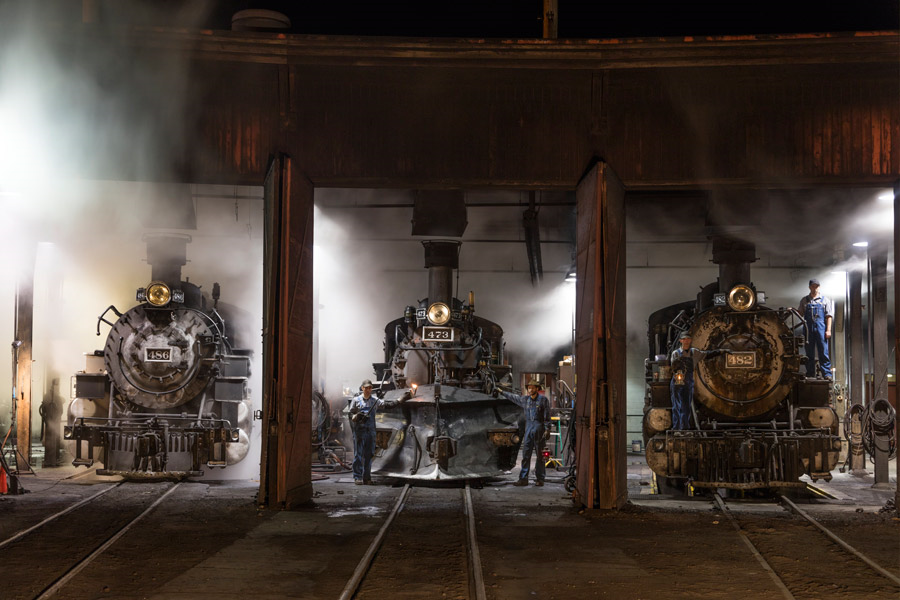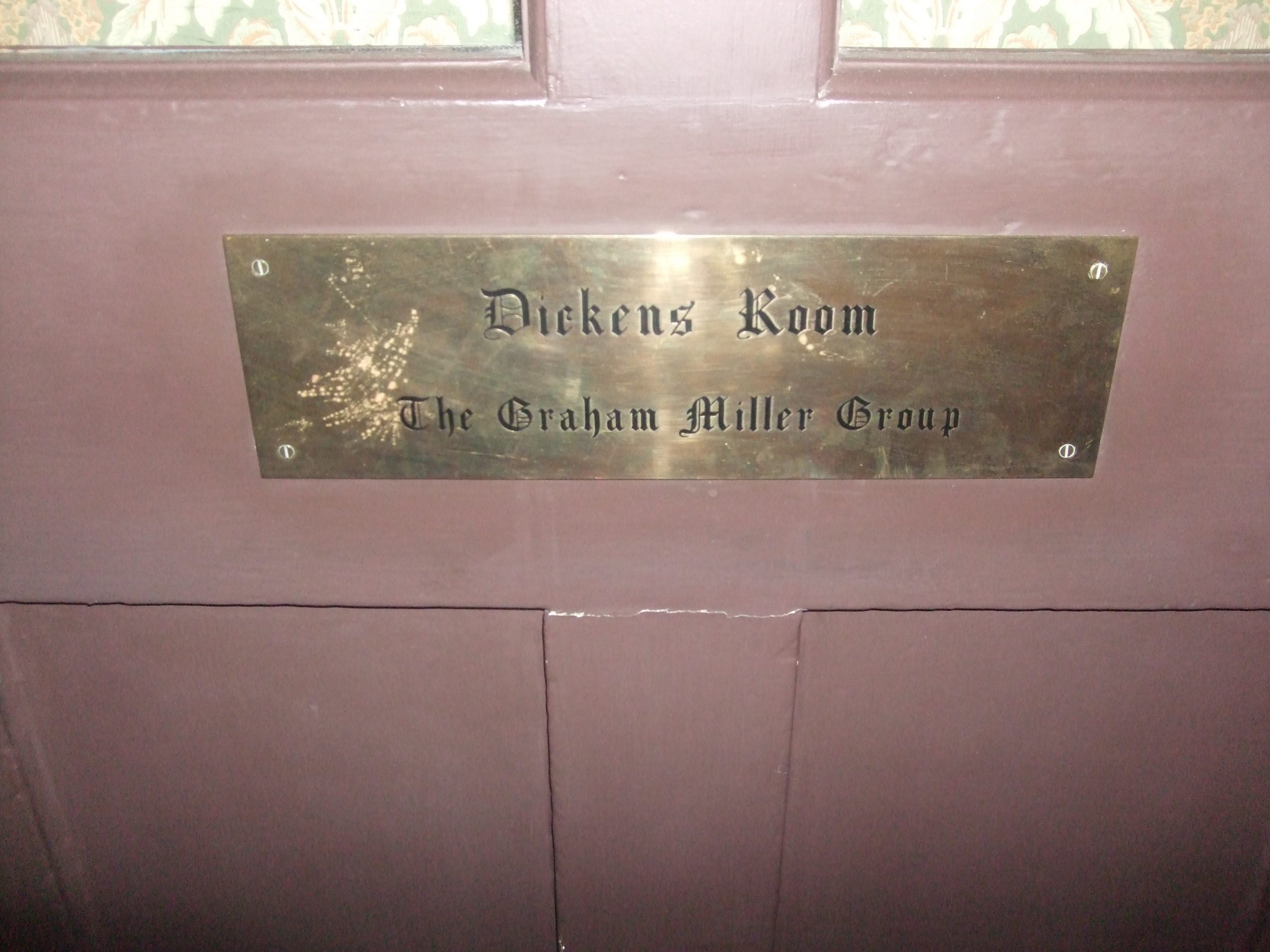リスク対応策 2020.08.22
RM43 チャールズ・ディケンズ(Charles Dickens)
For those who prefer to read this column in English, the Japanese text is followed by a British English translation, so please scroll down to the bottom of the Japanese text.
「ディケンズ」という名前で呼ばれることが多い、チャールズ・ジョン・ハファム・ディケンズ(Charles John Huffam Dickens)は、19世紀の英国、ヴィクトリア朝時代を代表する作家である。産業革命が勃興、工業が発展、それらに連動して大英帝国の世界進出が進行したのがヴィクトリア朝時代である。社会的にも変化の激しい時代を背景に、そうした混乱が起こす社会的矛盾のなかに「人間ドラマ」を見いだし、主に下層階級を主人公として、弱者の視点で社会を諷刺した多くの作品を発表した、英国を代表する作家である。
多くの作家の夢は、できるだけ長く、100年を超えても、出版した自分の本が人々の本棚にあることであろう。しかし、多くの作家の場合、これは夢と終わる。しかし、この偉業を達成した作家の一人が、チャールズ・ディケンズである。1836年から他界した1870年までの作家生活の間、20編近くの小説と多くの短編を発表したが、そのいずれも絶版にはなっていないのである。

1.ディケンズのメモリー・プレート
ロンドンに出張する度にランチを食べに行っていたレストランが、Bank駅の近く、シティの端にある。そのレストランの壁に「セドリック・チャールズ・ディケンズ(Cedric Charles Dickens)を追悼して」と「青い銘板」が掛かっている。作家、そして実業家、チャールズ・ディケンズの孫であり、彼の文学遺産の管理人でもあった、セドリック・チャールズ・ディケンズに因んだ銘板である。
彼は、チャールズ・ディケンズの生涯と作品に関心を寄せる世界的な団体である、ディケンズ・フェローシップ会の会長を務め、ディケンズが24歳の時に書いた長編小説「ピックウィック・クラブ」に因み、国際的なメンバーシップを有するクラブとして、ディケンズ・ピックウィック・クラブ(The Dickens Pickwick Club)を設立した。
また、チャールズ・ディケンズ自身が頻繁に飲んだ場所であったが、建物が古くなり解体されそうになった古いレストランの保存運動にも、彼は奔走したのである。そのレストランこそ、この「青い銘板」が壁に掛かっているレストラン、「George and Vulture」(ジョージ・アンド・バルチャー:邦訳:ジョージとハゲタカ)である。

2.ステープルハースト鉄道事故(Staplehurst rail crash)
1865年、チャールズ・ディケンズは鉄道事故に巻き込まれ幸いなことに九死に一生を得た。その事故の発生日時は1865年6月9日 午後3時13分、発生場所はケント州、ステープルハーストであり、「工事の際の線路閉鎖誤り」が事故原因で、死者10名、負傷者40名の大惨事であった。
ロンドンに向かっていた「サウス・イースタン鉄道」の鉄道列車が、土木工事のため線路が外されていた高架橋に差し掛かって脱線した事故であった。当時の英国商務省の報告書によると事故の概要は以下のとおりであった。:
①事故前2ヶ月間ほど、作業員8人と職長1人のチームが、前駅とステープルハースト駅の間に架かっている高架橋の線路の枕木を取り替えていた。
②当日、職長は時刻表を誤って読んだようであり、事故に遭遇した列車の定期運行日であることを見落としていた。
③規則では、1,000ヤード (910 m)離れた場所に赤い旗を持った作業員1人を配置しなければならないことになっていたが、
④作業員は、通常より狭い間隔で立てられていた電柱を参考に距離を数えていたため、その半分の距離、554ヤード (507 m)しか離れていない場所に立っていたため、列車が停止するためには時間が足りなかった。
⑤さらには、この地域内での線路の補修工事については運転士に通知されていなかったのである。
列車が停止するには、時間が足りなかったため脱線した事故であった。この列車で移動中に事故に巻き込まれたチャールズ・ディケンズは、この事故によって大きな精神的ショックを受けた。
実は、この事故の後、彼の作風が大きく変わったが、この事故によって受けた精神的ショックが彼の晩年の作品に目立つ暗い影の一因になったのでではないかと言われている。

3.事故の原因とその後のディケンズ
この事故の原因は;
①この工事について、「関係する、すべての組織、人」に伝達されていなかった。
②職長一人しか、時刻表、つまりは「事故の原因になる可能性のあるリスク」をチェックしていなかった。
③「1,000ヤード (910 m)離れた場所に赤い旗を持った作業員1人を配置したこと」を確認する人間がいなかった。
④作業員が、その距離を測るために電柱を見て距離を測っていた、そして
⑤工事によって発生する可能性のあるリスクに関して、「列車脱線事故のリスク」を把握していなければならない人間に情報が伝達されていなかった。
これらのことが複合的に作用した事故であったのである。
その背景は、「人間が動く、活動するとリスクが発生する」ということを認識していなかったことに尽きる。「リスクが発生する」という考えを有していれば、「その場合には、チェックするという作業が必要である」という考えに必ず辿り着くはずだからである。
このチェック(Check)という言葉は、日本語訳では、「確認する」という意味と、洋服柄の「チェック」がある。一見関係の無いような邦訳であるが、この「確認」と「柄」の2つの意味には、共通点がある。チェックの語源はチェス用語のcheckで、「王手」を意味し、「詰み」は「チェックメイト(checkmate)」という。
相手の王様を「チェックする」というところから、「検査、確認する」という流れで、今の意味が出来上がってきた。チェス盤を見ると、「柄」の方は想起されるであろう。いわゆる、盤面が「チェック柄」になっているのである。
このチェックという言葉が入っている、Can I take a rain check?という文章は、「誘われたけど、今回は都合悪いから、またの機会でもいいですか?」という意味で、「また誘ってください」という意味を言外に持つ、相手を慮る断り方である。人との関係では、この「曖昧性」は人間関係の潤滑油として重要な役目を果たすが、「チェックが必要な仕事、手続き」では、この曖昧性を排除しなければならない。
1870年6月9日、「エドウィン・ドルードの謎」を未完のまま、ケント州ギャッズ・ヒルの広壮な邸宅で、チャールズ・ディケンズは58歳で死去した。ディケンズ自身は、彼が好んだ場所で多くの小説を書き上げた、ケント州の田舎町ロチェスターに、「一私人」としての埋葬を希望していたが叶えられず、英国国会議事堂前の傍、戴冠式などの王室行事が執り行われ、内部の壁と床には歴代の王や女王、政治家などが多数埋葬されている、ウェストミンスター寺院(Westminster Abbey)の「詩人の敷地スペース」に埋葬された。

Dickens Room(ディケンズの間)
今回のまとめ
ディケンズが遭遇した鉄道事故の原因は2つである。それは、人の「思い込み」と「思い違い」である。「思い込み」が背景にあって、「職長は時刻表を誤って読んだ」のであり、また「事故に遭遇した列車の定期運行日であることを見落としていた」という「思い違い」があった、これらがリスクを発生させることになった発端である。
さらに、「事故を防ぐため」の対策でも、「作業員は電信柱が通常通り立てられている」と「思い込み」で距離を測っていたため半分の距離しか離れていない場所に立っていた。そのために、列車に赤い旗で「工事現場の場所」を知らせても、列車が停止するためには時間が足りなかったのである。さらに、工事をしているのだから、誰かが「危険に遭遇する可能性のある列車の運転士には知らせているだろう」という「思い込み」があった。しかし、実際には列車の運転士には何も通知されていなかったのである。
リスクマネジメントを進めていくうえで、これらの「思い込み」と「思い違い」のリスクを検証して、その対応策をとっていくことの重要性が解る事例である。尊い犠牲のもとで得た教訓と言えよう。
コロナ禍の前、昨年暮れの出張でも、キャプティブからの再保険を引受けている世界最大級の再保険会社のアンダーライター(保険引受人)とジョージ・アンド・バルチャーでランチを取った。店の名物マスターが、今回も2階にある、「Dickens Room(ディケンズの間)」と名付けた部屋を同行者に紹介してくれた。如何に英国人が、ディケンズを誇りに思っているかを如実に感じた。
彼が受けた「鉄道事故による大きな精神的ショック」は、現在では病名が確立したが、PTSDと呼ばれる心的外傷後ストレス障害(Post Traumatic Stress Disorder)である。
国を代表するような作家の作家生命を危うくする事故は、もしそれが現代に起きれば、その後の損害賠償では、大きな代価を払わなければならなくなるものとなって返ってくる。「思い込み」と「思い違い」を排除するリスクマネジメントの重要性、またその対応策としての「高額賠償責任保険」の重要性が併せて高くなっていることの証左である。
通常は起こりえないが、起きると企業の存亡に繋がりかねない高額な賠償責任事故に対応する手段は、通常の賠償責任保険ではなく、キャプティブを設立して海外の再保険会社から高額な賠償責任保険の引受け枠を確保する方が、リスク対応費用の面から遙かに効用が高い。その意味でもキャプティブを視野にした、本格的なリスクマネジメントの重要性が高まっていると言えるのではないだろうか。
執筆・翻訳者:羽谷 信一郎
English translation
Risk Management 43 – Charles Dickens
Charles John Huffam Dickens, often called “Dickens,” was one of the leading writers of the Victorian era in 19th century England. The Victorian era saw the rise of the Industrial Revolution, the development of industry, and the expansion of the British Empire into the world. Against the backdrop of an era of drastic social change, he found “human drama” in the social contradictions caused by such turmoil, and published many works caricaturing society from the perspective of the weak, featuring mainly the lower classes.
The dream of many writers would be to have their published books on people’s shelves for as long as possible, even beyond 100 years. For many writers, however, this ends up being a dream. But one author who achieved this feat was Charles Dickens, who, during his writing career from 1836 to 1870, when he passed away, published nearly twenty novels and many short stories, none of which were ever out of print.
1. Memory plate of Dickens’
There is a restaurant I used to go to for lunch every time I visited London on business, located at the edge of the City, near Bank Station. A blue plaque on the wall of the restaurant reads, “In memory of Cedric Charles Dickens”. The plaque is named after Cedric Charles Dickens, the grandson of author and businessman Charles Dickens, who was also the custodian of his literary legacy.
He was president of the Dickens Fellowship, the world’s leading organization interested in the life and work of Charles Dickens, a club with an international membership, named after Dickens’ full-length novel, The Pickwick Club, which he wrote when he was 24 years old. He founded The Dickens Pickwick Club, which was the first of its kind.
He also campaigned for the preservation of the old restaurant, where Charles Dickens himself often drank, which was about to be demolished as the building became obsolete. This is the restaurant where this blue plaque hangs on the wall, “George and Vulture”.
2. Staplehurst rail crash
In 1865, Charles Dickens was involved in a railroad accident that fortunately resulted in several casualties. The accident took place at 3.13pm on 9 June 1865 at Staplehurst, Kent, and was caused by “an error in closing the track during construction work”, resulting in ten deaths and forty injuries.
The accident occurred when a South Eastern Railway train bound for London derailed as it approached a viaduct where the tracks had been removed for engineering work. According to a report by the British Department of Commerce at the time, the summary of the accident was as follows :.
(1) For about two months prior to the accident, a team of eight workers and a foreman had been replacing the railroad track sleepers on the viaduct between the former station and the Staplehurst station.
(2) On the day of the accident, the foreman apparently misread the timetable and overlooked the fact that it was a scheduled day of operation for the train that was involved in the accident.
(3) The regulations required one red flagged worker to be stationed 1,000 yards (910 m) away, but
(4) The workmen had counted the distance by reference to poles that had been erected at narrower-than-normal intervals, and therefore stood only half that distance, 554 yards (507 m) away, which was insufficient time for the train to stop.
(5) Furthermore, the driver had not been notified of any repair work on the tracks within this area.
The accident was a derailment because there was insufficient time for the train to stop. Charles Dickens, who was involved in the accident while traveling on this train, was greatly affected by the accident.
In fact, his style changed dramatically after the accident, and it is said that the psychological shock he received from the accident may have been one of the reasons for the dark shadow that marked his later works.
3. The cause of the accident and subsequent Dickens
The cause of this accident is.
(1) The construction work had not been communicated to “all the organizations and people involved”.
(2) Only one foreman had checked the timetable, i.e. the “potential risk of causing an accident”.
(3) There was no one to check that “one worker with a red flag was placed 1,000 yards (910 m) away”.
(4) the worker was looking at the pole to measure the distance; and
(5) Information was not communicated to the people who should have been aware of the “risk of train derailment” with respect to the risks that might arise from the construction work.
The accident was the result of a combination of these things.
The background to the accident was the failure to recognize that when humans move and act, risks are generated. This is because, if a person has the idea that a risk arises, he or she will surely come to the conclusion that a check is necessary in that case.
The word “Check” has two meanings in Japanese: “to check” and “check” as in a dress pattern. Although the Japanese translations may seem unrelated at first glance, these two meanings of “check” and “pattern” have something in common. The word “check” comes from the chess word “check”, which means “Ote”, and “jamming” is called “checkmate”.
From “check” the opponent’s king to “inspect or check” the opponent’s king, the current meaning of the word has been created. If you look at the chess board, you will remember the pattern. The surface of the board has a checkered pattern.
The sentence “Can I take a rain check?” containing the word “check” means “I was invited to a rain check, but this time it’s not convenient, can we do it another time? In other words, it is a way of refusing to consider the other person, which implies “please invite me again”. In human relations, this “ambiguity” plays an important role as a lubricant in relationships, but in “tasks and procedures that require checking,” this ambiguity must be eliminated.
On June 9, 1870, Charles Dickens died at the age of fifty-eight in his spacious mansion in Gads Hill, Kent, leaving The Mystery of Edwin Drood unfinished. Dickens himself had hoped to be buried as a “private citizen” in the rural Kent town of Rochester, where he wrote many of his novels in his preferred location, but he was unable to do so, and where, beside the front of the Houses of Parliament, coronations and other royal events are held, and where many of the kings, queens and politicians of the past are buried on the walls and floors of the interior. He was buried in Westminster Abbey in the ‘Poet’s Site Space’, Westminster Abbey.
Summary of this issue
There were two causes of the railroad accidents that Dickens encountered. They are people’s “assumptions” and “misconceptions”. The “assumption” was in the background, “the foreman misread the timetable”, and the “misconception” that “he had overlooked the fact that it was a scheduled day of operation for the train that was encountered in the accident”, and these were the genesis of the risk that arose.
Furthermore, the measures taken to “prevent accidents” also showed that the workers were standing only half a distance away because they had “assumed” that the telegraph poles were being erected as usual and measured the distance. This meant that even though the train was marked with a red flag informing the train of the “location of the construction site”, there was not enough time for the train to stop. Furthermore, there was an “assumption” that since they were doing construction work, someone would have “informed the train driver that he or she might encounter a danger”. However, in reality, the train drivers were not notified of any of these hazards.
This case illustrates the importance of examining the risks of these “assumptions” and “misunderstandings” and taking countermeasures against them in the promotion of risk management. This is a lesson learned at the cost of great sacrifice.
Before the Corona disaster, on a business trip late last year, I had lunch with an underwriter from one of the world’s largest reinsurance companies, George & Vulture, who underwrites reinsurance from captives. The famous master of the restaurant again showed my companions the Dickens Room on the second floor, which was called the Dickens Room. I really felt how proud the English are of Dickens.
The “great psychological shock of the railway accident” he had suffered from is a now-established disease called Post Traumatic Stress Disorder, or PTSD.
An accident that endangers the life of an author of one of the country’s most iconic writers, if it happens today, will come back to haunt them in subsequent damages for which they will have to pay a huge price. This is evidence of the growing importance of risk management that eliminates assumptions and misunderstandings, as well as the importance of high-deductible liability insurance as a countermeasure.
In order to deal with high-cost liability incidents that are unlikely to occur, but if they do occur, could lead to the demise of a company, it is far more effective in terms of risk management costs to set up a captive and secure high-deductible liability insurance from an overseas reinsurance company rather than a regular liability insurance policy. In this sense, full-scale risk management with a view to captives is becoming increasingly important.
Author/translator: Shinichiro Hatani

